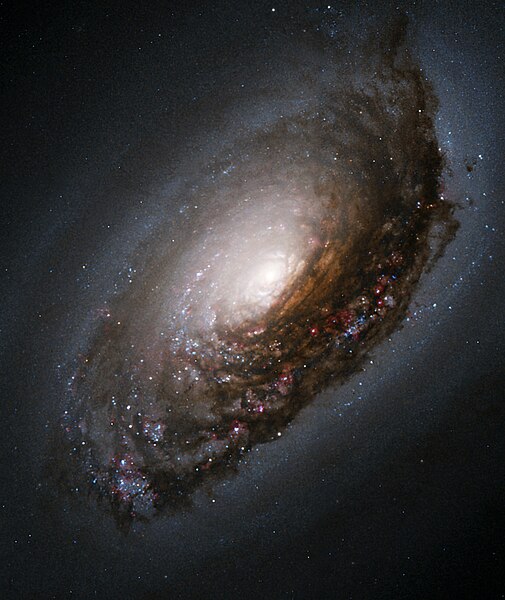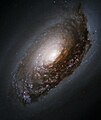Сурет:Blackeyegalaxy.jpg
Навигацияға өту
Іздеуге өту

Бұл алдын ала көрудің өлшемі: 505 × 600 пиксел. Басқа ажыратылымдықтар: 202 × 240 пиксел | 404 × 480 пиксел | 897 × 1065 пиксел.
Түпнұсқа файл (897 × 1065 пиксел, файл өлшемі: 774 КБ, MIME түрі: image/jpeg)
Файл тарихы
Файл сол кезде қалай көрінгенін көру үшін күн/уақыт дегенге басыңыз.
| Күн/Уақыт | Нобай | Өлшемдер | Қатысушы | Пікір | |
|---|---|---|---|---|---|
| қазіргі | 15:46, 2005 ж. маусымның 2 |  | 897 × 1065 (774 КБ) | CWitte | This image of M64 was taken with Hubble's Wide Field Planetary Camera 2 (WFPC2). The color image is a composite prepared by the Hubble Heritage Team from pictures taken through four different color filters. These filters isolate blue and near-infrared lig |
Файл қолданылуы
Бұл файлды мына бет қолданады:
Глобалды файл қолданылуы
Бұл файл келесі басқа уикилерде қолданылады:
- af.wikipedia.org жобасында қолданылуы
- ar.wikipedia.org жобасында қолданылуы
- ast.wikipedia.org жобасында қолданылуы
- az.wikipedia.org жобасында қолданылуы
- be.wikipedia.org жобасында қолданылуы
- bg.wikipedia.org жобасында қолданылуы
- bn.wikipedia.org жобасында қолданылуы
- br.wikipedia.org жобасында қолданылуы
- bs.wikipedia.org жобасында қолданылуы
- ca.wikipedia.org жобасында қолданылуы
- ce.wikipedia.org жобасында қолданылуы
- ckb.wikipedia.org жобасында қолданылуы
- co.wikipedia.org жобасында қолданылуы
- cs.wikipedia.org жобасында қолданылуы
- cy.wikipedia.org жобасында қолданылуы
- de.wikipedia.org жобасында қолданылуы
- diq.wikipedia.org жобасында қолданылуы
- el.wikipedia.org жобасында қолданылуы
- en.wikipedia.org жобасында қолданылуы
- Messier object
- Coma Berenices
- List of galaxies
- Portal:Astronomy/Picture/May 2005
- Portal:Astronomy/Picture/12 May 2005
- Portal:Astronomy/Picture/Week 48 2005
- User:ComaDivine
- User:Superfo
- User:Gilgamesh~enwiki/Favorite images
- List of spiral galaxies
- Portal:Solar System
- Portal:Solar System/WikiProjects
- User:Passargea/Favourite pictures/Space
- User:Logos/Hall of Galaxies
- User talk:Example/Archives/2008/April
- User:Mike YuHong Chen
- User:Stefania.deluca/sandbox
Бұл файлдың глобалды қолданылуын көбірек көру.
